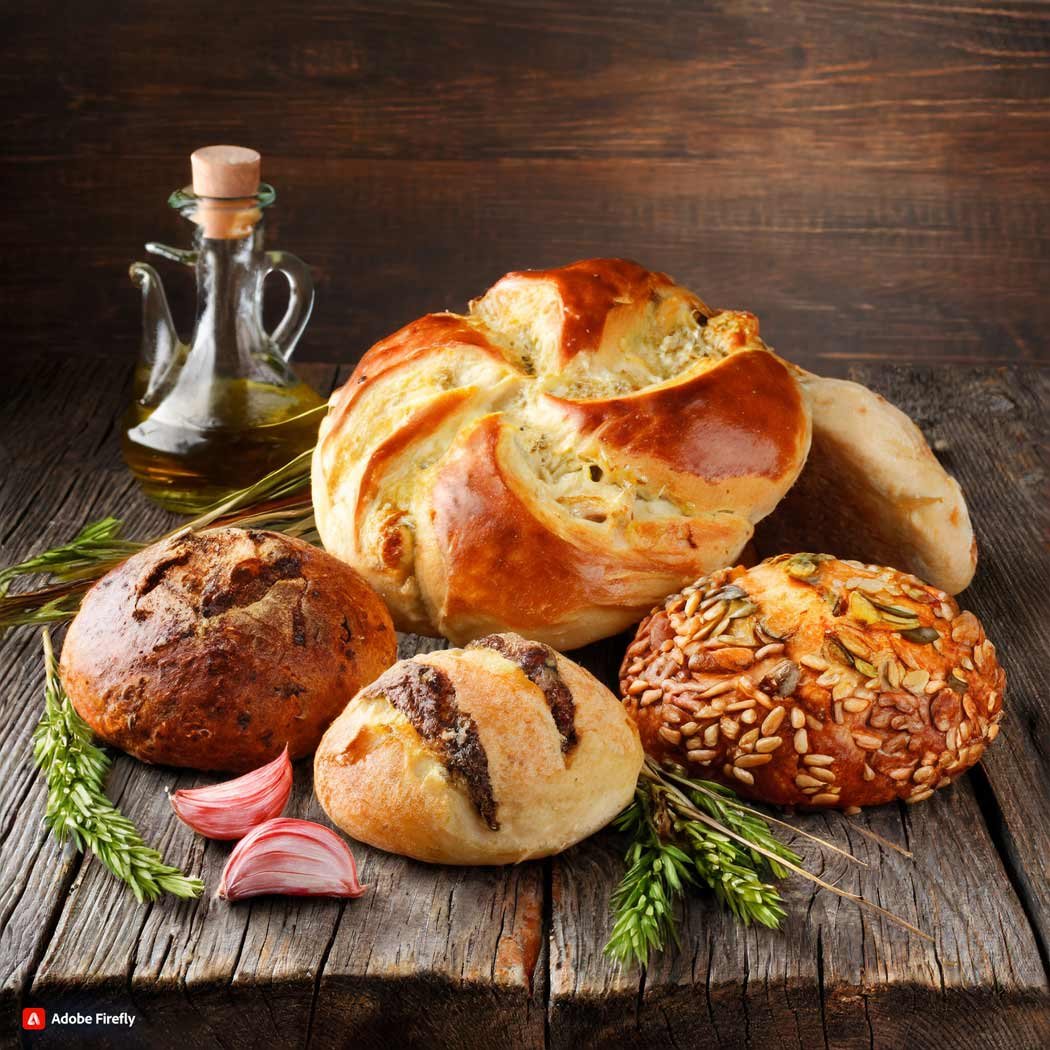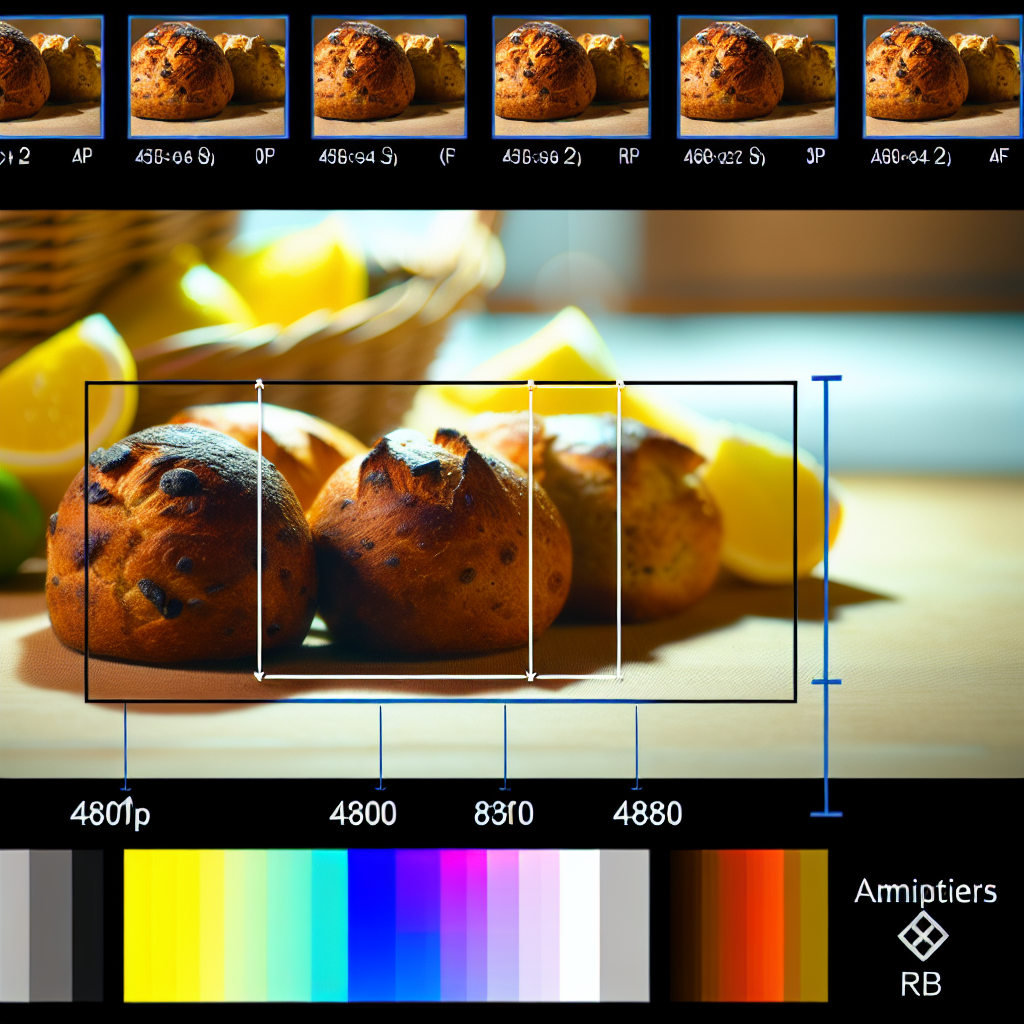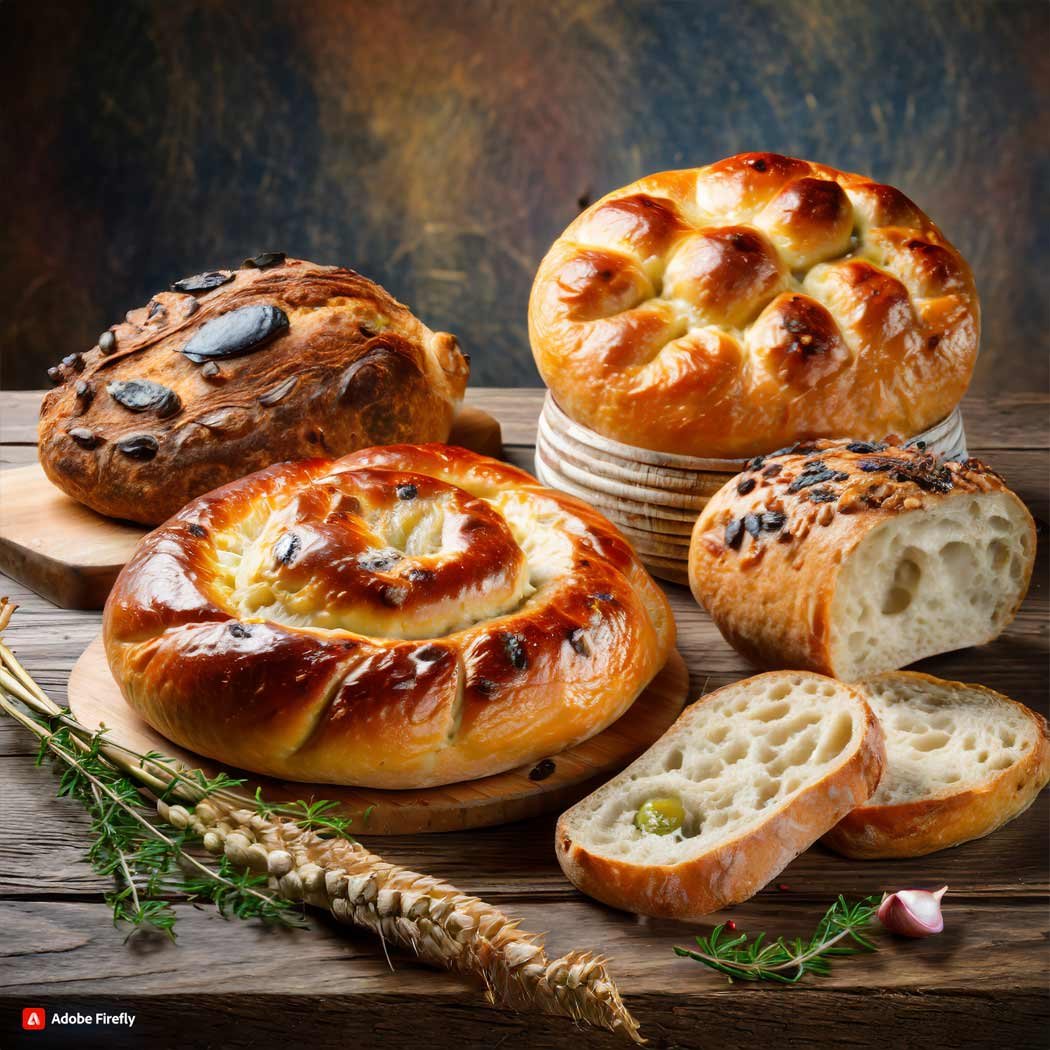“Discover the rich and diverse world of Indigenous Canadian cuisine with Bannock Beyond Basics! Explore unique variations of the traditional bannock bread and expand your culinary horizons. Visit our website to access a variety of authentic Indigenous recipes and start your culinary journey today. Click here to explore our collection of Indigenous foods: https://culinary.1touchfood.com/recipe-category/indigenous-foods/”
Introduction
Bannock Beyond Basics is a cookbook that delves into the rich history and cultural significance of Indigenous Canadian bannock bread. This traditional bread has been a staple food for many Indigenous communities for centuries and has evolved over time to include various regional and personal variations.

In this cookbook, readers will not only learn how to make the classic bannock bread, but also explore the diverse and unique variations that have been passed down through generations. From sweet to savory, Bannock Beyond Basics offers a delicious and educational journey through the world of Indigenous Canadian bannock bread.
Traditional vs. Modern: A Comparison of Indigenous Canadian Bannock Bread Variations

Bannock bread has been a staple in Indigenous Canadian cuisine for centuries. This simple yet versatile bread has been a source of sustenance and comfort for many Indigenous communities across Canada. Traditionally, bannock was made with just a few basic ingredients such as flour, water, and sometimes animal fat. However, as time has passed and cultures have evolved, so has the recipe for bannock. In this article, we will explore the variations of bannock bread and how it has transformed from its traditional roots to modern adaptations.
Traditional bannock bread is a simple and hearty bread that has been a part of Indigenous Canadian culture for generations. It was often made on the open fire or in a cast-iron pan over hot coals. The ingredients were simple and easily accessible, making it a practical and convenient food for Indigenous communities. The dough was typically made with flour, water, and sometimes a bit of salt. It was then formed into a round shape and cooked until golden brown. This traditional bannock bread was often served with stews, soups, or as a side dish to accompany meals.
As Indigenous communities began to interact with European settlers, the recipe for bannock bread started to evolve. The addition of sugar, baking powder, and milk became common in bannock recipes. These ingredients were introduced by European settlers and added a touch of sweetness and fluffiness to the bread. This modern adaptation of bannock is often referred to as “fry bread” and is a popular dish at powwows and other Indigenous gatherings. It is typically fried in oil instead of being cooked over an open fire, giving it a crispy exterior and a soft, doughy interior.
Another modern variation of bannock is the use of different types of flour. While traditional bannock was made with all-purpose flour, modern recipes often call for whole wheat flour, cornmeal, or even gluten-free flour. These variations not only add different flavors and textures to the bread but also cater to dietary restrictions and preferences. For example, using cornmeal in bannock bread is a nod to the traditional corn-based diet of many Indigenous communities. Read easy Healthy Lunch for Weight Loss.
In addition to the ingredients, the cooking methods for bannock have also evolved. While traditional bannock was cooked over an open fire or in a cast-iron pan, modern adaptations include baking the bread in an oven. This method allows for a more consistent and evenly cooked bannock, making it easier to prepare in larger quantities. Bannock can also be cooked on a stovetop in a skillet or even in a deep fryer, giving it a crispy texture similar to a donut.
Despite the variations in ingredients and cooking methods, bannock bread remains a significant part of Indigenous Canadian culture. It is a symbol of resilience and adaptation, as Indigenous communities have embraced new ingredients and techniques while still honoring the traditional roots of bannock. Whether it’s served at a community gathering or made at home with loved ones, bannock bread continues to bring people together and nourish both the body and soul.
In conclusion, bannock bread has come a long way from its humble beginnings as a simple dough cooked over an open fire. The variations in ingredients, cooking methods, and even the name (from bannock to fry bread) reflect the evolution of Indigenous Canadian cuisine and the influence of different cultures. However, no matter how it is made, bannock bread remains a beloved and essential part of Indigenous Canadian culture, connecting generations and preserving traditions. So next time you enjoy a piece of bannock, take a moment to appreciate the rich history and cultural significance behind this delicious bread.
From Sweet to Savory: Exploring the Diverse Flavors of Bannock Bread Variations
Bannock bread is a staple in Indigenous Canadian cuisine, and its popularity has spread beyond its traditional roots. This simple yet versatile bread has been a part of Indigenous culture for centuries, and its variations have evolved over time. From sweet to savory, bannock bread has a diverse range of flavors that reflect the unique cultures and traditions of Indigenous communities across Canada.

Traditionally, bannock bread was made with simple ingredients such as flour, water, and sometimes animal fat. It was cooked over an open fire or on a hot stone, making it a convenient and portable food for nomadic Indigenous communities. Today, bannock bread can be found in many different forms, each with its own unique twist on the traditional recipe.
One of the most popular variations of bannock bread is the sweet version. This is often made with the addition of sugar, dried fruits, or maple syrup. The sweetness of these ingredients adds a delicious flavor to the bread, making it a perfect treat for any occasion. Some Indigenous communities also add traditional ingredients such as wild berries or honey to their sweet bannock, giving it a unique and local touch.
Another popular variation is the savory bannock bread. This version is often made with herbs, spices, and sometimes even meat. The addition of savory ingredients gives the bread a rich and hearty flavor, making it a great accompaniment to stews, soups, and other savory dishes. In some Indigenous communities, bannock bread is also used as a base for pizza, topped with traditional ingredients such as wild game or local vegetables. Read Lunch for Weight Loss.
One of the most interesting variations of bannock bread is the fry bread. This version is made by frying the dough in oil, giving it a crispy and golden exterior. Fry bread is a popular dish in many Indigenous communities, and it is often served with savory toppings such as chili, cheese, or beans. It can also be served as a dessert, topped with sweet ingredients like honey or jam.
In recent years, bannock bread has also been adapted to fit different dietary needs and preferences. Many Indigenous communities have started making gluten-free bannock bread, using alternative flours such as cornmeal or rice flour. This allows those with gluten sensitivities to enjoy this traditional dish without any restrictions. Vegan bannock bread is also becoming more popular, with the use of plant-based ingredients such as coconut oil and almond milk.
The versatility of bannock bread goes beyond just its flavors. It can also be shaped and cooked in different ways, depending on the community and their traditions. Some Indigenous communities make bannock bread in the shape of a disc, while others make it into a long, thin strip. Some even make it into small balls, similar to doughnuts. The cooking methods also vary, with some communities still cooking it over an open fire, while others use modern ovens or stovetops.
Bannock bread is not just a food, but it is also a symbol of Indigenous culture and resilience. It has been passed down through generations and has adapted to the changing times while still holding onto its traditional roots. Its variations reflect the diversity and richness of Indigenous communities across Canada, and each one has its own unique story to tell.
In conclusion, bannock bread is more than just a basic bread. Its variations in flavors, shapes, and cooking methods make it a versatile and beloved dish in Indigenous Canadian cuisine. From sweet to savory, bannock bread has something for everyone, and it continues to evolve and adapt, keeping its cultural significance alive. So the next time you have a chance to try bannock bread, be sure to explore its diverse flavors and appreciate the history and traditions behind this delicious dish.
Beyond the Basics: Unique Ingredients and Techniques in Indigenous Canadian Bannock Bread Variations
Bannock bread is a staple in Indigenous Canadian cuisine, and its popularity has spread beyond its traditional roots. This simple yet versatile bread has been a part of Indigenous culture for centuries, and its variations reflect the diverse ingredients and techniques used by different Indigenous communities across Canada.

While the basic recipe for bannock bread consists of flour, water, and salt, there are many unique variations that incorporate different ingredients and techniques. These variations not only add flavor and texture to the bread but also reflect the cultural and regional influences of the Indigenous communities that created them.
One popular variation of bannock bread is the use of wild berries. In many Indigenous communities, wild berries such as blueberries, raspberries, and cranberries are abundant and are often incorporated into bannock bread. These berries not only add a burst of flavor but also provide essential nutrients and antioxidants. The berries can be added to the dough or used as a topping, and they can be fresh, dried, or even mashed into a jam-like consistency.
Another unique ingredient used in bannock bread is wild game meat. In traditional Indigenous communities, hunting and gathering were essential for survival, and wild game meat was a significant part of their diet. Today, many Indigenous communities still incorporate wild game meat into their bannock bread, adding a rich and savory flavor to the bread. Popular choices include venison, moose, and bison, and the meat can be added to the dough or used as a filling.
In addition to unique ingredients, different techniques are also used to make bannock bread. One technique is the use of a frying pan instead of an oven. This method is commonly used by Indigenous communities who live in remote areas and do not have access to ovens. The dough is flattened and cooked in a frying pan over an open fire, resulting in a crispy and delicious bread.
Another technique is the use of traditional cooking methods such as steaming or boiling. In some Indigenous communities, bannock bread is wrapped in leaves or placed in a pot with water and cooked over a fire. This method results in a softer and more moist bread, and the leaves or water can add a unique flavor to the bread.
Aside from variations in ingredients and techniques, bannock bread also varies in shape and size. In some communities, bannock bread is made into small, bite-sized pieces, while in others, it is made into large, round loaves. The shape and size of the bread can also hold cultural significance, with some communities shaping the bread into symbols or shapes that represent their traditions and beliefs.
Bannock bread is not only a delicious and versatile food, but it also holds cultural significance for Indigenous communities. It is often shared during gatherings and ceremonies, and its variations reflect the diversity and resilience of Indigenous cultures across Canada.
In recent years, Bannock Bread Variations has gained popularity beyond Indigenous communities, with many restaurants and bakeries incorporating it into their menus. However, it is essential to recognize and respect the cultural origins of bannock bread and its variations. When trying out different variations of bannock bread, it is crucial to understand the cultural significance and history behind each variation.
In conclusion, Bannock Bread Variations is more than just a simple bread; it is a representation of the diverse Indigenous cultures and traditions in Canada. Its variations in ingredients, techniques, and shapes reflect the creativity and adaptability of Indigenous communities. So the next time you try a new variation of bannock bread, remember to appreciate and honor its cultural roots.
Q&A – Bannock Bread Variations
1) What is Bannock Beyond Basics?
Bannock Beyond Basics is a cookbook that explores different variations of Indigenous Canadian bannock bread. It includes traditional recipes as well as modern twists on this staple food.
2) What is bannock bread?
Bannock bread is a type of flatbread that has been a staple food for Indigenous peoples in Canada for centuries. It is typically made with flour, water, and sometimes other ingredients such as berries or meat.
3) What are some variations of bannock bread?
Some variations of bannock bread include adding different types of flour, such as cornmeal or rye flour, to the dough. Other variations may include adding ingredients like dried fruits, nuts, or herbs for added flavor. Some recipes also call for frying the bannock in oil instead of baking it.
Conclusion for Bannock Bread Variations
In conclusion, Bannock Beyond Basics is a cookbook that explores the various variations of Indigenous Canadian bannock bread. It showcases the rich history and cultural significance of this traditional bread, while also providing modern twists and adaptations for a wider audience. Through this cookbook, readers can learn about the diverse ingredients and techniques used in making bannock bread, and how it has evolved over time. Bannock Beyond Basics is a celebration of Indigenous cuisine and a valuable resource for anyone interested in learning more about this staple food in Canadian Indigenous communities.
Please follow us on linkedin. You can learn all best canadian food recipes you can check our Culinary 1TouchFood Youtube and Telegram 1TouchFood page. Don’t forget Fighting Obesity Magazine and Radio Cooking.

